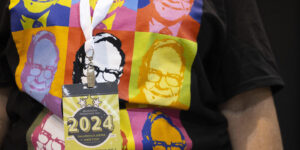The increased illumination of LED (light-emitting diode) headlights creates a dilemma: It allows drivers to see more clearly ahead, but can cause additional glare for drivers in the oncoming lane, according to automaker Nissan. During dark winter months this can pose added frustration for nighttime drivers.
To address the more than 90 percent of accidents caused by human error, Nissan is enhancing headlight technology as part of its mission to protect people and help drivers avoid risky situations.
“You want to see and be seen. LEDs can help with both,” said Brad Chisholm, an engineer on the exterior Lights, Mirrors and Wipers team at Nissan Technical Center North America in Farmington Hills, Michigan.
Precise patterns ease strain on other drivers’ eyes
Over the past two decades, LED headlights have gradually replaced halogen and high-intensity discharge (also known as xenon) lamps.
Easily distinguished, halogen lamps emit a warm, yellow light, while LEDs emit a cool, white light.
In addition to being brighter, LEDs are about 80 percent more energy efficient and last longer than halogen bulbs.
Critically, Chisholm says, LEDs also allow engineers to design a precise low-beam headlight pattern that both illuminates the road and reduces glare. This “anti-glare notch” makes it easier for oncoming drivers to see without being dazzled by approaching lights, he added. “The strongest, brightest light is aimed toward the lane of travel, while dimmer light is cast toward the oncoming lanes.”
Engineers create the notches by directing light in specific directions and creating physical barriers within the headlight housing to block the light in other directions, the Nissan engineer explained. Though notches exist with halogen lamps and are required by regulations, they are more well defined with LEDs, he added.
“We have the ability to carve out that area of the oncoming lane with everything around it being bright and the inside being super dark,” Chisholm said. “We’re able to push the limits using LEDs.”
Nissan offers LEDs as standard or optional equipment on all 2024 U.S. models.
High Beam Assist – which automatically turns high beams on or off based on traffic and lighting conditions – is included with Nissan Safety Shield 3601.
Agencies like the Insurance Institute for Highway Safety (IIHS) are also testing for glare during their vehicle evaluations.
In recent tests, both the Nissan Rogue and Murano received the IIHS’ top headlight rating. The agency noted that both crossovers’ low beam headlights never exceeded glare limits.
A Nissan headlight typically undergoes at least 300 tests before it is approved for production, Chisholm said.
Chisholm is excited for the future, especially since adaptive driving beam headlights have been approved for use in the U.S.
The lights have the potential to move the anti-glare notch in real time to adjust for oncoming vehicles’ positions.
“That’s something I’m stoked about,” Chisholm said.



















 Auto Insurance Price Inflation Overstated, Swiss Re Economists Say
Auto Insurance Price Inflation Overstated, Swiss Re Economists Say  Seeking Shelter From Mounting Hailstorms? New Approaches for Underwriters and Claims Execs
Seeking Shelter From Mounting Hailstorms? New Approaches for Underwriters and Claims Execs  AI-Powered Insurance Product Development Is Going to Take Some Powering Through
AI-Powered Insurance Product Development Is Going to Take Some Powering Through  LexisNexis: Loss Costs Rise for All Home Insurance Perils
LexisNexis: Loss Costs Rise for All Home Insurance Perils 



